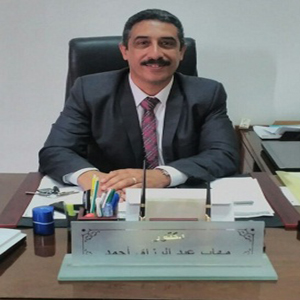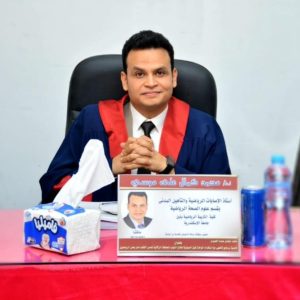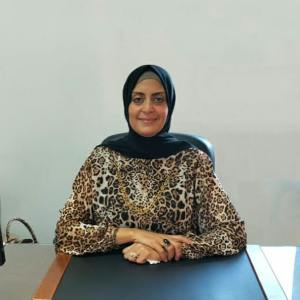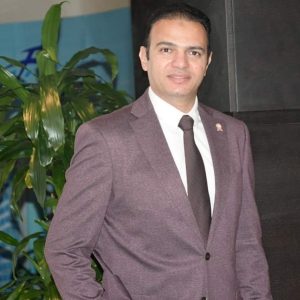History of the College of Physical Education , Abu Qir
The College of Physical Education – Abu Qir is considered one of the leading educational institutions in the field of physical education in the Arab Republic of Egypt. It has contributed, for nearly fifty years, to the advancement of the educational process by preparing distinguished qualified cadres who have shouldered the burden of raising, educating and training successive generations of this country’s children. Dear homeland, for whom sports activity played a prominent role in shaping their personalities and instilling noble sporting principles in their souls. This ancient scientific institution also had its clear mark in the development of the serious scientific research movement that carried the banner of eminent scholars whom this college honors and to whom generations of science students and researchers are indebted. In Egypt and the sisterly Arab countries, the history of the College of Physical Education for Boys in Alexandria goes back to the year 1955 when a decision was issued to establish an Institute for Physical Education in Abu Qir, which would be under the supervision of the Ministry of Education, and would include two departments: the Higher Section and the Intermediate Section. Since that date, the Institute has witnessed great academic and structural development until it became To what it is now
First: academic development
The institute was established in 1955, with its high and intermediate sections, with the duration of study being three years in the high section, in which high school students are enrolled, and three years in the intermediate section, in which students who hold a middle school certificate are enrolled. In 1958, a decision was issued to abolish the intermediate section and add it to the Intermediate Institute in Helwan, while maintaining the department. High only. The first class of students graduated in that year (1958) for the Higher Diploma in Physical Education. A decision was also issued in 1958 making study at the institute four years, after which the graduate would obtain a bachelor’s degree in physical education. The first class to obtain a bachelor’s degree at the institute was the class of 1961, and in In 1964, the regulations for higher institutes affiliated with the Ministry of Higher Education were issued. It is similar to the regulations for Egyptian universities in that the institute is divided into theoretical and practical scientific departments and the faculty members are granted academic titles (professor – assistant professor – teacher – assistant teacher – teaching assistant). In 1975, Helwan University was established to replace the Ministry of Higher Education in supervising higher institutes. Thus, the list of Egyptian universities began to be applied to these institutes and their names were changed to colleges. The Institute of Physical Education in Abu Qir was called the College of Physical Education for Boys – Abu Qir – Helwan University, and in 3 In September 1989, a presidential decree was issued to annex the four faculties of Helwan University in Alexandria to the University of Alexandria, so the name of the Faculty of Physical Education – Abu Qir – Helwan University was changed to the Faculty of Physical Education for Boys – Alexandria University as of this date.
In 2002, the Minister of Higher Education Decision No. (320) was issued on 3/10/2002 approving the issuance of the internal regulations of the College of Physical Education for Boys in Abu Qir, which aims to:-
Preparing specialists in the field of physical education to work in various community institutions in one of the following fields:
1- School sports
2- Sports training in specialized sports
3- Sports management
Based on Ministerial Resolution No. (2865) dated 2/23/2020, the internal regulations of the Faculty of Physical Education for Boys at Alexandria University were amended (bachelor’s level – with the credit hours system).
Based on Ministerial Resolution No. 951 dated 5/29/2023, the internal regulations of the Faculty of Physical Education for Boys at Alexandria University were amended (studies stage – with the credit hours system).
Second: Structural development
When the institute was established, there was no suitable place for its headquarters, so a decision was issued to start the institute with the Fatwa camp in Babi Qir, which consisted of several summer buildings (which were only used during the summer), all of which were dormitories and bathrooms. It was necessary to develop this place in order for it to become suitable for its nature and type of study. The efforts of the students of the institute had a great impact on this development. In 1959, the first covered gymnasium was established at the institute. The students created four gymnastics courts in front of this hall. Tons of sand were also transported to cover and raise the ground in order to raise the level of the ground to become paved and usable. Also constructing some playgrounds and some parks, thus making the institute’s streets usable. During the work camps that were held specifically for this purpose at the beginning of each academic year, the students paved these streets and raised their level.
With these students’ own efforts and the support of some bodies in Alexandria and the Supreme Council for Youth and Sports, a running track and a large playground were established, and basketball and volleyball courts were also established on the eastern side of the institute. At the beginning of 1956, a building was built that included a large amphitheater that could accommodate nine hundred students, three intermediate auditoriums, and a bathroom. In 1967, a 25-meter-long swimming pool was built, surrounded by an amphitheater, and beneath it was a dressing unit and some rooms for faculty members. In 1969, a student housing unit was built, including several dormitories for students and study rooms. The lower floor also contains a kitchen, a restaurant, and a large hall as a club for students. To complement all of this, the institute’s administration built a greenhouse for plants and flowers to enhance the institute’s gardens. All of this was done through the efforts of the institute’s students. Every student had a course in establishing and developing this institute, and every class that joined it from 1959 had to create a playground, a garden, or pave a road and maintain it throughout the duration of their studies. This message has continued until now, with each batch leaving its mark as evidence of its efforts to develop the college within the limits of available capabilities. The labor camps became one of the main features of the college’s student activity throughout its long history. The hand of development is still pursuing tools, devices, buildings, playgrounds, laboratories, streets and halls of the college, whether through the university, the Supreme Council for Youth and Sports, or self-efforts. In 1989, when the college joined the University of Alexandria, the university began to provide the college with all facilities to rebuild and renovate it, where it was:
- Construction of a 2-storey educational building.
- Renovating, equipping and preparing the athletics track.
- Renovation of the main gym.
- Establishing a games hall.
- Renovation of the student housing building.
- Paving the college’s main roads.
- Renovation of the bidding hall.
- Construction and renovation of the college’s sanitation.
- Renovation of swimming pool terraces.
- Renovating and planting three football fields.
- Renovation of tennis courts.
- Renovating the handball courts and photographing them with a new fence.
- Renovation of basketball courts.
- Renovation of volleyball courts.
- Renewal of boxing rings.
- Establishment of a Sports Research and Information Unit.
- Establishing a fitness and sports center unit for all.
Recently, the following has been developed:
- Increasing the efficiency of the stadiums (Tartan – stadium next to the oven – Ministry Stadium)
- Increasing the efficiency of the swimming pool in terms of maintaining the pool itself and changing equipment
- Making pumps to raise groundwater for use in irrigating green spaces to save water
- Renovating and opening the gym
- Developing the ATM machine to serve all groups within the college
- Modifying the organization of streets, re-planning them, and paying attention to afforestation
- Developing the college nursery
- Renovation of the student city restaurant oven
- Replacement and renovation of the faculty building
- Replacement and renovation of the controls building
- Renovation of multi-purpose stadiums
- Establishing a Street Workout area next to the college gate
Vision and mission of the Faculty of sport Education Abu Qir
College vision
Leadership and innovation in sports sciences, physical education, scientific research and community service at the local and international levels
College message
The Faculty of Physical Education Abu Qir - Alexandria University is committed to preparing competent graduates who possess the ethics of practicing the profession and are qualified to play an effective and distinguished role in the fields of sports, physical education, community service and environmental development by providing distinguished programs for the undergraduate and postgraduate levels, and enhancing the role of scientific research in comprehensive development. Sustainable and consolidating the values of citizenship and national belonging
The strategic goals and objectives of the College of sport Education Abu Qir
- – Renewing the college’s accreditation by the National Authority for Educational Quality Assurance and Accreditation.
– Creating educational environments based on advanced technical systems.
– Developing the skills of faculty members and supporting staff to keep pace with developments in the means and methods of teaching and learning.
- – The credit hour system is applied to undergraduate programs.
– New, innovative programs that meet the needs of the labor market at the postgraduate level and achieve a competitive advantage.
– Providing students with distinguished educational services.
- – Developing the college’s research plan and developing mechanisms to follow up on its implementation.
– Developing policies to support and stimulate scientific research.
– Maximizing the college’s role in community service and environmental development
– Communicating with college graduates and providing continuing education opportunities in order to develop their professional and research experiences.
|
Professor Dr. Mohamed Abdel Hamid Fayez Bilal Dean of the College |
|||
 |
 |
 |
|
|---|---|---|---|
|
Professor Dr. Mohab Abdel Razzaq Ahmed Desouky Vice Dean of the College for Community Service and Environmental Development Affairs |
Professor Dr. Mohamed Kamal Mousa Vice Dean of the College for Postgraduate Studies and Research |
Mrs. Amira Shehata Ahmed General Secretary |
|
| The Name | Scientific Department |
|---|---|
| Prof.Dr. Ahmed Sobhi Salem | Head of the Sports Department |
| Prof.Dr. Sobhi Hassouna Hassouna | Head of the Wrestling and Individual Sports Department |
| Prof.Dr. Muhammad Al-Azab Behairy Al-Azab | Head of the Water Sports Department |
| Prof.Dr. Haitham Abdel Razzaq Ahmed Desouki | Head of the Department of Fitness, Gymnastics and Sports Performances |
| Prof.Dr. Wael Muhammad Muhammad Ibrahim Omar | Acting Head of the Department of Sports Life and Health Sciences |
| Prof. Dr. Taha Sobhi Taha Ghobashi | Head of the Department of Curricula and Methods of Teaching Physical Education and Sports |
| Prof.Dr. Raafat Abdel Monsef Ali | Head of the Athletics Department |
| Prof.Dr. Raafat Saeed Hindawi | Head of the Department of Sports Management and Recreation |
| Prof.Dr. Walid Suleiman Ismail | Head of the Department of Physical Education |
| N | The Name | Duration |
|---|---|---|
| 1 | Mr. Mustafa Kamel Al-Bagouri | From August 1955 until June 1958 |
| 2 | Mr. Hussein Rushdi Othman Shalabi | From August 1958 until January 1975 |
| 3 | Mr. Abdel Fattah Lotfy El-Sayed | From January 1975 until June 1975 |
| 4 | Mr. Khalil Fawzi Ibrahim | From July 1975 until October 1975 |
| 5 | Prof. Dr. Abdel Azim Mahmoud Fayaz | From October 1975 until October 1978 |
| 6 | Prof. Dr. Kamal Al-Din Othman Shalabi | From October 1978 until October 1981 |
| 7 | Prof. Dr. Mohamed Al-Sayed Shata | From November 1981 until October 1982 |
| 8 | Prof. Dr. Muhammad Hassan Abu Obayya | From November 1982 until January 1985 |
| 9 | Prof. Dr. Muhammad Fathi Al-Kardani | From February 1985 until January 1992 |
| 10 | Prof. Dr. Essam El-Din Abdel Khaleq | From February 1992 until July 1997 |
| 11 | Prof. Dr. Ahmed Al-Hadi Youssef | From August 1997 until July 2000 |
| 12 | Prof. Dr. Abdel Moneim Badir Muhammad Al-Qaseer | From August 2000 until 2005 |
| 13 | أ.د/ محمد خالد عبد القادر حمودة | من أغسطس 2005 وحتى اغسطس 2010 |
| 14 | أ.د/ محمد صبري عمر | من أغسطس 2010وحتى اغسطس 2011 |
| 15 | أ.د/ نادر محمد محمد مرجان | من أغسطس 2011 وحتى يوليو 2017 |
| 16 | أ.د/ احمد سعد الدين محمود عمر | من اكتوبر 2017 وحتى سبتمبر 2020 |


